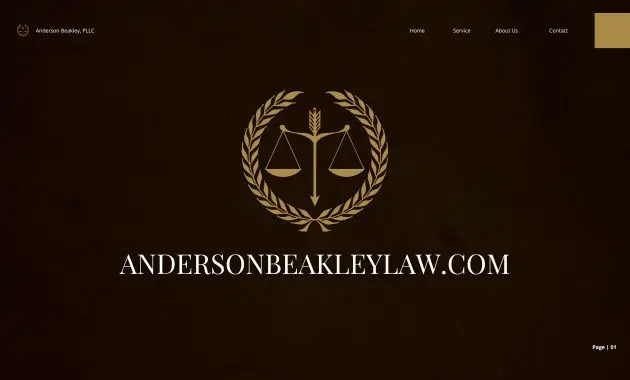Creditors’ rights law, a complex and often misunderstood area of law, governs the rights and responsibilities of both creditors and debtors in the event of financial distress. It establishes the framework for debt collection, bankruptcy proceedings, and the protection of both parties’ legal interests. This intricate legal landscape encompasses a vast array of principles, remedies, and procedures, shaping the dynamics of financial transactions and ensuring a balance between the rights of lenders and borrowers.
Understanding creditors’ rights law is crucial for anyone involved in lending or borrowing money, as it Artikels the legal boundaries within which financial transactions occur. This knowledge empowers individuals and businesses to navigate the complexities of debt, protect their interests, and make informed decisions in the face of financial challenges. This article delves into the core principles of creditors’ rights law, examining the rights of creditors, the protections afforded to debtors, and the role of the legal system in resolving disputes.
Rights of Creditors: Creditors’ Rights Law
Creditors, individuals or entities that lend money or provide goods or services on credit, have certain legal rights to protect their interests and ensure repayment of the debts owed to them. These rights are essential for maintaining a functioning credit system and ensuring that lenders are compensated for their financial risk.
Also Read
The Right to Collect Debts, Creditors’ rights law
Creditors have the right to collect debts owed to them, which includes pursuing legal action if necessary. This right is fundamental to the creditor-debtor relationship, as it allows lenders to recover their investments.
- Communication and Demand for Payment: Creditors can contact debtors to request payment and negotiate payment arrangements. This communication may be done through various means, including letters, phone calls, or emails.
- Collection Agencies: Creditors can hire collection agencies to pursue outstanding debts. These agencies have specialized expertise in debt recovery and can utilize various strategies to collect payments.
- Legal Action: If negotiations fail, creditors can file lawsuits to recover the debt. This involves presenting evidence to a court to prove the existence of the debt and obtain a judgment against the debtor.
The Right to Foreclose on Secured Property
When a loan is secured by collateral, such as a house or a car, creditors have the right to foreclose on the property if the debtor defaults on the loan payments. Foreclosure is a legal process that allows creditors to seize and sell the collateral to recover the outstanding debt.
- Notice and Opportunity to Cure: Before initiating foreclosure, creditors are typically required to provide notice to the debtor and give them an opportunity to cure the default by making the missed payments.
- Foreclosure Process: The foreclosure process involves filing a lawsuit, obtaining a court order, and conducting a sale of the property. The proceeds from the sale are used to pay off the outstanding debt, with any remaining funds returned to the debtor.
The Right to File a Lawsuit
Creditors have the right to file a lawsuit against debtors to recover unpaid debts. This right is crucial for creditors to enforce their contractual rights and protect their financial interests.
- Statute of Limitations: Creditors must file lawsuits within a specific timeframe, known as the statute of limitations, which varies depending on the type of debt and the jurisdiction.
- Types of Lawsuits: Creditors can file various lawsuits, including breach of contract, debt collection, and judgment enforcement actions.
- Discovery and Trial: The lawsuit process typically involves discovery, where both parties exchange information, and a trial, where the court hears evidence and decides the outcome.
Creditors’ Remedies

When a debtor fails to fulfill their obligations, creditors have recourse to legal remedies to recover their losses. These remedies aim to enforce the debtor’s contractual obligations and ensure the creditor receives their due payment.
Garnishment
Garnishment is a legal process where a creditor seeks to collect a debt from a third party who owes money to the debtor. This third party, often an employer or financial institution, is legally obligated to withhold funds from the debtor and pay them to the creditor. For example, a creditor could garnish a debtor’s wages by obtaining a court order requiring the debtor’s employer to withhold a portion of their paycheck and send it directly to the creditor.
Attachment
Attachment is a legal procedure where a creditor can seize and hold a debtor’s property to secure payment of a debt. This property, which can include real estate, vehicles, or other assets, is held by the court until the debt is settled. This ensures that the creditor can recover their losses even if the debtor attempts to sell or dispose of the property.
Bankruptcy Proceedings
Bankruptcy proceedings provide a legal framework for debtors who are unable to repay their debts to restructure their financial obligations and potentially receive a fresh start. In bankruptcy, a court-appointed trustee manages the debtor’s assets and distributes them to creditors according to a predetermined order of priority. Creditors can file claims in bankruptcy proceedings, and their claims are subject to the rules and procedures established by bankruptcy law.
The Role of the Court System

The court system plays a crucial role in resolving disputes between creditors and debtors, ensuring fairness and upholding the rights of both parties. Courts provide a neutral forum for adjudicating claims, interpreting contracts, and enforcing legal remedies.
Legal Standards and Procedures Governing Creditors’ Rights Litigation
Creditors’ rights litigation is governed by specific legal standards and procedures. These procedures ensure a fair and orderly process for resolving disputes.
- Pleadings: The process begins with the creditor filing a complaint outlining the debt and the relief sought. The debtor then files an answer, which may include defenses or counterclaims.
- Discovery: After the pleadings are filed, the parties engage in discovery, where they exchange information and evidence. This process can involve depositions, interrogatories, and document requests.
- Motion Practice: During the litigation process, parties may file motions to dismiss, for summary judgment, or for other relief. These motions are decided by the court based on the legal arguments and evidence presented.
- Trial: If the case does not settle, it proceeds to trial, where the parties present their evidence and arguments to a judge or jury. The court then renders a verdict or judgment based on the evidence and applicable law.
- Enforcement: After a judgment is entered, the creditor can enforce it through various means, such as garnishment of wages, liens on property, or execution on assets.
Impact of Judicial Decisions on Creditors’ Rights Law
Judicial decisions play a significant role in shaping and interpreting creditors’ rights law. These decisions establish precedents that guide future litigation and influence legislative changes.
“The Supreme Court’s decision in *Marbury v. Madison* established the principle of judicial review, which empowers courts to invalidate laws that conflict with the Constitution. This principle has had a profound impact on creditors’ rights law, as courts have used judicial review to strike down laws that are deemed to be unfair or unconstitutional.”
Creditors’ rights law plays a vital role in maintaining a stable financial system by balancing the interests of creditors and debtors. While it provides creditors with legal avenues to recover debts, it also safeguards debtors from unfair or abusive practices. The law’s effectiveness lies in its ability to strike a delicate balance between the need for financial stability and the protection of individuals and businesses from undue hardship. As the financial landscape continues to evolve, understanding and adapting to the complexities of creditors’ rights law remains crucial for navigating the modern financial world.




